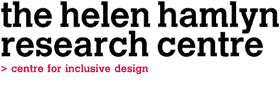 Gangsta Rapper Mista Blaq’s brandnew stunning website just went online: www.mistablaq.de.
Gangsta Rapper Mista Blaq’s brandnew stunning website just went online: www.mistablaq.de.
I did the motherfuckin‘ flash realization on behalf of Floor 5 Berlin, who created the graphics and the database. Check it out! 😉
News
steffiklenz.co.uk
 Just online: the website i designed and programmend for the fine art photographer Steffi Klenz. She just graduated from the Royal College of Art in fine art photography. Yesterday i saw great works at her final show, The Show: One, RCA. In my view the best works are in photography and ceramics, definitely worth a look (ongoing till 6 June).
Just online: the website i designed and programmend for the fine art photographer Steffi Klenz. She just graduated from the Royal College of Art in fine art photography. Yesterday i saw great works at her final show, The Show: One, RCA. In my view the best works are in photography and ceramics, definitely worth a look (ongoing till 6 June).
yourStation.co.uk
 www.yourstation.co.uk is a new platform for writing stories about London’s underground stations. My pal Kalle Kormann developed the site during his MA at Ravenbourne College.
www.yourstation.co.uk is a new platform for writing stories about London’s underground stations. My pal Kalle Kormann developed the site during his MA at Ravenbourne College.
Outerspace at Designmai, Berlin
 Outerspace, the recent robot by my mate Andre Stubbe and me, is exhibited at Designmai, Berlin, 13-15 May 2005. For further information see the Outerspace website.
Outerspace, the recent robot by my mate Andre Stubbe and me, is exhibited at Designmai, Berlin, 13-15 May 2005. For further information see the Outerspace website.
Google world map
 Great new google service, nicely programmed in JavaScript. But where is my beloved home country?
Great new google service, nicely programmed in JavaScript. But where is my beloved home country?
Cybersonica Festival 2005
 Cybersonica is an international festival for music & sound, supported by the Dana Centre, London.
Cybersonica is an international festival for music & sound, supported by the Dana Centre, London.
The presented work didn’t seem that exciting to me, but Golan Levins keynote was really interesting: „Audiovision and Computation: Landmarks, Paradigms, Futures“. Also great to see him live-performing some of his works.
Calvert Font
 Yeah, i just got to know another nice typeface: Calvert, again by Margaret Calvert, cut in 1980. Its a nice slab serif typeface, which is used for the corporate design of The Helen Hamlyn Research Centre e.g.
Yeah, i just got to know another nice typeface: Calvert, again by Margaret Calvert, cut in 1980. Its a nice slab serif typeface, which is used for the corporate design of The Helen Hamlyn Research Centre e.g.
Include 2005 Conference
 During the past few days i had the pleasure to attend the Include 2005 Conference at the Royal College of Art by working as a presentation assistant.
During the past few days i had the pleasure to attend the Include 2005 Conference at the Royal College of Art by working as a presentation assistant.
It was all about inclusive (universival) design, an approach to design in general and a hot future issue i think every designer should be familiar with. The purpose of inclusive design is to ensure that mainstream products, services, and environments are accessible to the largest number of people, irrespective of age or ability. It seeks to include those people in society who have been excluded by design, such as disabled people, the elderly, or children.
A great thing about this new mindset is that it at the same time attaches high importance to the aesthetics of a design.
Links
The Include Programme
The Helen Hamlyn Research Centre
Definition of inclusive design
Respiration measurement
Finally i did a more extensive research for my main interactive project at LCC, monitoring breathing of many people resp. hearing a building breathe.
These are methods of measuring (human) respiration in the most general sense:
With touch
1. Mouth airflow
by Spirometer2. Nasal temperature probe
by thermistor3. Acoustic
by stethoscope4. Thoracic (chest) or abdominal (belly) expansion
by strap extension (e.g. using ultrasonic distance measurement)
Touchless
1. Acoustic
by ceiling dome microphone2. Thermal
by infrared imaging3. Capnographic
by measuring exhaled carbon dioxide
More Links and details are coming soon.
Conceptional Design & Info Art Links
 Very interesting huge overview of artworks at the intersection of Art, Technology,
Very interesting huge overview of artworks at the intersection of Art, Technology,
Science & Culture:
Infoarts Links
Beyond that, it contains links about festivals, organisations and a huge bibliography. A really great resource, compiled by Stephen Wilson, professor for Conceptual/Information Arts at San Francisco State University.






























